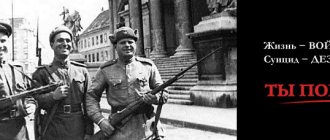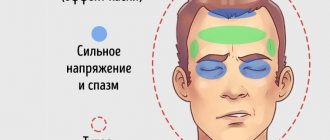Home / Psychological trainings
Psychological conducts individual and group trainings in St. Petersburg. The topic of the lecture is selected taking into account the nature of the psychological problem. You can sign up for group psychotherapy trainings by phone or through the website.
Psychological training is one of the forms of active learning that allows a person to better know himself, see his weaknesses, and identify new peaks to conquer. For each lesson, the psychologist selects a variety of exercises, the implementation of which gives participants the opportunity to become more successful and happier.
The importance of psychological training
Psychological trainings promote personal development and self-knowledge. In their classes, experienced psychologists exert a psychological influence on the client in order to normalize his mental state, help him express himself, and build friendly relationships with others. Methods used by specialists (for example, psychologist Nikita Valerievich Baturin) help children and adolescents develop certain character qualities, useful skills and forms of behavior. Children get rid of complexes and phobias, learn to act correctly in various situations, communicate tactfully, and cope with difficulties independently.
Psychological training for children of any age includes interesting psychological exercises and exciting games. In the process of each psychological lesson, a specific skill or behavior model is taught.
Psychology training can be individual or group. Depending on the required result, the required form of training is selected. The use of group psychological trainings is advisable for training communication skills, stress resistance, and self-confidence. The benefits of psychological exercises are only possible if the child himself is interested in change and personal growth.
The second stage of the psychological exercise – getting to know your emotions
Now take your manuscript and begin to read out loud what you have written, thoroughly savoring each upcoming task. (Please do not list those routine tasks that make up the backbone of your schedule.)
As a starting point, add the phrase to each task from the list
“Next week I’m SO MUCH going to...”
Have you read one thing? Stop. Monitor yourself - what emotion did the prospect of doing this activity next week evoke in you?
Write down this emotion, describe it. Use the space left on the paper for this. Trying to delve into your emotions is the first step towards future satori.
Catharsis method
The catharsis method (purification method) is a way to neutralize negative emotions. This method has been known for more than 2 centuries and was used by Aristotle.
Aristotle believed that tragedy makes one experience fear, anger, suffering and thereby cleanses a person’s state of mind: “...unexperienced fear or anger cannot alleviate mental anguish.”
Sigmund Freud used catharsis to treat neuroses. The patient, in the presence of a doctor, must re-experience the traumatic situation, realize it and, having responded correctly, get rid of the painful symptoms.
Does it really look like something? In a simplified version, this is a conversation between friends, when they share troubles and adversities with each other, thereby relieving their souls by reliving disturbing situations. Girlfriends are good, but why sometimes these conversations don’t bring relief? Because we are waiting for understanding not in terms of resolving the conflict, but in terms of confirmation that we are right in it. How we want to have the last word, we are ready to shout, prove, be offended, get angry. Remember your last conflict, its cause - anything worthwhile? I think not, but we elevate everything to the level of a global catastrophe and suffer from it.
You will say that a person should decide everything himself. Yes, on his own, but he is waiting for a hint, and maybe he came to you for this hint. And don’t play the role of a knowledgeable prompter; in most cases, a person, having told his story more than once, already knows the answer, and comes to you for another portion of understanding, just listen to him.
The price of satisfying genuine needs
Reasoning along the lines of “Next week I’m supposedly going to write a thesis, and in fact I will... write a thesis” have no therapeutic value. This is a tautology. And this is sabotage of the exercise.
Our goal when performing the “To Do List for the Next Week” exercise is different.
We must definitely catch ourselves doing something else instead of one thing.
This will help us figure out our emotions - carefully recorded. Does going to a birthday party cause a flurry of negative emotions? Strange... Does going to the grocery store cause a storm of joy? It's also weird...
For example, our real need is to spend more time outdoors and walk more. To do this, we create a false goal: we go to a distant store for household purchases.
(Information extracted from the phrase: “I’m kind of going to go shopping, but really I’m just going to enjoy walking and breathing fresh air.”)
Or – our real need – is not to see our husband, children and mother-in-law for several hours.
To do this, we create a similar fake goal - we go to a distant store to do some shopping.
Having seen which of all this in our lives is real and which is “fictitious”, we must ask ourselves the most important “accounting” question:
Rosenzweig drawing test
It is suggested to look at certain drawings-tasks, imagine yourself in the role of a hero and determine your line of behavior. Write your answer in the free square of the picture. You need to answer quickly, with the first phrase that comes to mind. You must answer frankly and as quickly as possible.
It is vital for you to develop your own rhythm of resistance and protection; moreover, you need to teach these methods to your children and loved ones so that confidence and calm will settle in your family.
Chapter 3. Psychological games and exercises stage 3
3.1. Plastic training (elements of body-oriented therapy)
V.B. Berezkina-Orlova, M.A. Baskakova The main goal of the training is to improve psychological well-being through awareness of body language. Achieving this goal is facilitated by the consistent solution of the following tasks: 1) finding and removing your own clamps; 2) study of nonverbal components of communication; 3) awareness of your own body language.
The presented type of training can be considered as a type of “body-oriented” training. Full communication is impossible without the so-called “feedback”. It is always important for a person to know to what extent he was understood, to what extent he was accepted with all the information that he wants to convey, to what extent he himself correctly understood, saw, heard what was told to him. Often when communicating, only its verbal component is taken into account, but a person always, whether he realizes it or not, also speaks with his body. And it is this “non-verbal” language that can be more informative and even more truthful (in cases where verbal and non-verbal manifestations diverge or contradict each other). The situations offered in this training provide the skill of decoding non-verbal language, thereby providing a new communication experience. The skill is acquired by mastering exercises in the following areas (topics): 1. Release from muscle tension (from the so-called “clamps”). Liberation from bodily constraints, according to the theoretical tenets of body-oriented psychotherapy, is one of the indirect paths to liberation from psychological constraints, since bodily ones are generated by mental ones. Exercises on this topic are given at the beginning of any lesson; these are the so-called “warm-up procedures”. 2. Attention. This topic contains exercises on focusing attention (on the “here and now”), switching attention, attracting attention to yourself, etc. 3. Imagination and fantasy, which are a necessary link in creative search, fill similar human movements with diverse and, most importantly, meaningful content. 4. Actually communication and interaction with the elaboration of non-verbal means of communication (intonation, facial expressions, movements, etc.) and its content (context, subtext, atmosphere). 5. The culmination of the lesson cycle is interaction in happenings - improvisation. 1. “ Tension - relaxation” In the first lesson, participants become familiar with the simplest muscle clamps. Participants are asked to stand up straight and focus on their right arm, straining it to the limit. After a few seconds, release the tension and relax your hand. Perform a similar procedure alternately with the left arm, right and left legs, lower back, and neck. 2. “ Tension roll” Tighten your right arm to the limit. Gradually relaxing it, completely transfer the tension to your left hand. Then, gradually relaxing it, completely transfer the tension to the left leg, right leg, lower back, etc. 3." Fire - ice" The exercise includes alternating tension and relaxation of the whole body. Participants perform the exercise while standing in a circle. At the command of the “Fire” leader, participants begin intense movements with their entire bodies. The smoothness and intensity of movements are chosen arbitrarily by each participant. On the command “Ice”, the participants freeze in the position in which the team caught them, straining their entire body to the limit. The presenter alternates both commands several times, randomly changing the execution time of both. 4." Mercury" Participants stand in a circle. The facilitator invites participants to imagine their body as a mechanism that needs lubrication, or as a vessel that must be completely filled with a liquid, such as mercury. “I inject mercury (or oil) into your index finger.” You must fill all the joints of your body with fluid. Perform the exercise slowly and with concentration so that not a single area is left without lubrication. 5. “ Clamps in a circle” Participants walk in a circle. At the leader’s command, tense the left arm, left leg, right arm, right leg, both legs, lower back, and the whole body. The tension in each individual case should first be weak, then gradually increase to the limit. In this state of extreme tension, the participants walk for several seconds (15 - 20), then, at the command of the leader, they release the tension - completely relax the tense part of the body. After finishing this part of the exercise, the leader gives the participants the task to listen to the sensations of their body, continuing to walk calmly in a circle, to remember their “usual” tension (their usual tension). Gradually straining the body in this place, bring the clamp to the limit, and release it after 15 - 20 seconds. Tighten any other part of the body to the limit, paying attention to what happens with the “regular” clamp. Repeat the exercise with your own clamps 3 – 5 times. After completing the exercise, participants are advised to individually repeat it at least 1-2 times a day. 6. “Try to determine where the person’s center of gravity is. Move around, sit down, stand up. Find the center of gravity of the cat's body (i.e. move like a cat). Where do you feel the center of gravity? Where is the center of gravity of the monkey's body? Rooster? Fish? A sparrow jumping on the ground? Performing movements and actions characteristic of these animals, try it all out for yourself. Animals and small children are the best example of the absence of muscle tension.” 7." Growing” Participants in a circle. Starting position - squatting, bend your head towards your knees, clasping them with your hands. Presenter: “Imagine that you are a small sprout that has just emerged from the ground. You grow gradually straightening, opening up and rushing upward. I will help you grow by counting to five. Try to distribute the growth stages evenly.” By complicating the exercise in the future, the leader can increase the duration of “growth” to 10–20 “stages.” 8. “Sculptor and Clay” Participants are divided into pairs. One of them is a sculptor, the other is clay. The sculptor must give the clay the shape (pose) he wants. “Clay” is pliable, relaxed, “accepts” the shape that the sculptor gives it. The finished sculpture freezes. The sculptor gives it a name. Then “sculptor” and “clay” switch places. Participants are not allowed to talk.
9. “Group sculpture” Each participant is both a sculptor and clay. It finds its place in accordance with the general atmosphere and content of the composition. All work takes place in complete silence. The first participant comes out to the center of the room, it can be anyone who wants to or the person appointed as the leader, and takes some kind of pose. Then a second one is added to it, the third is added to the composition common to the first two participants. When performing this exercise, you must: 1) act at a fairly fast pace; 2) make sure that the resulting compositions are not a meaningless mosaic of figures isolated from each other. Option: a “frozen” sculpture can “come to life”. 10. “Puppets” (“Pendants”) Participants are asked to imagine that they are marionette dolls that hang on nails in the closet after the performance. “Imagine being hung by your hand, by your finger, by your neck, by your ear, by your shoulder, etc. Your body is fixed at one point, everything else is relaxed, dangling.” The exercise is performed at an arbitrary pace, with your eyes closed. The facilitator monitors the degree of relaxation of the body of the participants 11. “Coordinated actions” Relationship and interaction skills are well trained by exercises for paired physical actions. Participants are invited to perform the following sketches: – sawing wood; – rowing; – rewinding threads; – tug of war, etc. At first these exercises seem quite simple. However, when performing them, participants need to remember the coordination of actions and the appropriateness of tension distribution. You can invite other participants to join in the exercise (tug of war, jumping rope, playing with an imaginary ball, etc.). One of the variants of the proposed exercises is “Rope walker”. The “tightrope walker” imitates walking on a tightrope. He walks in a straight (imaginary) line on the floor, but “as if” on a tightrope: sliding and balancing, seeking balance. The partner blows on him from the side, as if trying to “blow” the tightrope walker off the rope. He blows from an arm's length distance, but not into the face, but approximately into the chest. The goal of the tightrope walker is to hold on despite the obstacle. 12. “Justification of the pose” Participants walk in a circle. When the leader claps, everyone must throw their body into an unexpected position. An explanation must be selected for each pose. “Imagine that you performed some meaningful action... On the command “Remove”, continue this action. We need to understand what you are doing. Try not to come up with trivial excuses that can be used to explain any pose. Look for actions that correspond exactly to the position of your body in which you are frozen, only to it and no other.” 13. “Shadow” Participants are divided into pairs. One of them will be a Man, the other will be his Shadow. A person makes any movements. Shadow repeats. Moreover, special attention is paid to ensuring that the Shadow acts in the same rhythm as the Man. She must guess about the well-being, thoughts and goals of a Person, and grasp all the shades of his mood. 14. “Mirror” Participants break into pairs and stand facing each other. One of the players makes slow movements. The other must exactly copy all the movements of his partner, be his “mirror image”. At the first stages of working through the task, the presenter imposes some restrictions on the actions of the “original”: 1) do not make complex movements, i.e. do not perform several movements at the same time; 2) do not make facial movements; 3) perform movements at a very slow pace. After some time, the participants change roles. During the exercise, participants working on “reflection” quickly learn to feel the partner’s body and grasp the logic of his movements. From time to time it becomes easier to follow the “original” and more and more often a situation of anticipation and even ahead of its actions arises. Exercise is a very good tool for establishing psychological contact. 15. “Japanese car” The group sits in a semicircle. Participants are counted in order, starting from any edge. The presenter is always assigned the number “zero”. The leader may take part in the exercise, but most often he just starts it and sets the pace. The tempo is set by all members of the group as follows: on the count of “one,” hit the knees with the palms of both hands, on the count of “two,” snap the fingers of the right hand, on the count of “three,” snap the fingers of the left hand, etc. Simultaneously with the click of the right hand, the presenter begins the game by pronouncing his number “Zero”. At the click of his left hand, he calls the number to the player, who continues the game further. For example: “Zero – two.” This is followed by a strike with the palms on the knees (everyone is silent). At the same time, participants, inviting each other to play, must necessarily accompany their invitation with a glance. A participant who makes a mistake in completing a task stops the game, but continues to sit in a semicircle and tap the rhythm. The presenter, without changing the pace, states, for example: “There is no third,” and continues the game. Errors are considered: 1) failure of tempo; 2) incorrectly giving your number; 3) incorrect identification of the partner’s number; 4) an invitation to the game of a retired participant or presenter (if he does not play); 5) an invitation to play, not accompanied by a glance. Possible ways to complicate the game: speeding up the pace; changing the direction of calculation of participants; calculation in odd numbers or letters. The game turns when there are 2 - 3 participants left in the circle. This task is primarily about gathering attention. It is impossible to fulfill all the requirements of the game without focusing on its conditions, on the “here and now” situation. In addition, this task is about the ability to navigate the surrounding conditions (elimination players) in a situation of limited time (set pace) and, finally, this task is about establishing contact between group members. By observing the exercise, you can identify the leaders of the group, pair, and “outcasts.” It is also interesting to follow the intonations with which the numbers are called. 16. “RiLet's tap out this rhythm as follows. Everyone takes turns hitting one clap. From left to right. When the rhythm ends, the next participant waits a short pause and starts over; and so on until the presenter’s command “Stop”. Possible ways to complicate the task: lengthening and complicating the rhythm; tapping the rhythm by each player with both hands in turn, etc. 17. “Object in a circle” The group sits down or stands in a semicircle. The presenter shows the participants an object (a stick, a ruler, a jar, a book, a ball, any object in sight); the participants must pass this object to each other in a circle, filling it with new content and playing with this content. For example, someone decides to play a ruler like a fiddle. He passes it to the next person exactly like a violin, without uttering a word. And he takes her like a violin. The study with the violin is finished. Now the second participant plays with the same ruler, for example as a gun or a brush, etc. It is important that the participants do not just make some gestures or formal manipulations with the object, but convey their attitude towards it. This exercise develops the imagination well. To play a ruler like a violin, you must first of all see the violin. And the less similar the new, “seen” object is to the proposed one, the better the participant coped with the task. In addition, this exercise is about interaction, because a person must not only see a new object himself, but also force others to see and accept it in a new quality.
18." Word-verb" Exercise for two participants who stand opposite each other at some distance. The first participant, throwing the ball to the second, names any word (noun) that comes to his mind. The second catches the ball and immediately throws it back, choosing the appropriate verb. The first one catches and throws a new noun, etc. This version of the “free association” technique is extremely interesting and informative for subsequent work with the problems of each individual participant. 19. “Chess” The driver turns his back to all other participants, who are located in a random order and at an arbitrary distance relative to each other. The driver turns and tries to remember the position of the chess for 30 - 40 seconds. The presenter gives explanations: “You need to remember only the position of the figures, their poses do not matter (if there are many participants),” or: “You must remember not only the position of the figures, but also the pose of each (if there are few participants).” The driver turns away, the chess is shuffled. The driver’s task is to restore the picture. 20. “Drawing from dots” The exercise can take place in two stages: 1) Each participant practices independently. 2) One participant “leads”, others watch him and try to guess the figure he has in mind. The figures of the “drivers” and the observers are compared. The presenter invites participants to fix their gaze on some point on the ceiling. Then another one, sufficiently distant from the first, but so that, however, to fix them one by one, it would be enough to move your gaze without turning your head. Then the third, fourth, etc. Then these points must be mentally connected by straight line segments. After tracing the resulting figure several times, the participant must walk along the projection of this figure on the floor. The second stage of the exercise is aimed at observing the driver’s body. 21. “How many people clapped?” The group sits in a semicircle. A “leader” and a “conductor” are selected from the participants. The “driver” stands with his back to the semicircle at some distance from it. The “conductor” takes a place in front of the participants and points with a gesture to one or the other. Called by the “conductor” gesture, the participant claps his palms once. The same participant can be called twice or three times. A total of 5 claps should sound. The “driver” must determine how many people clapped. After he has completed his task, the “driver” takes a place in the semicircle, the “conductor” goes to introduce, and a new participant comes out of the semicircle. 22. “Listening” The group sits in a semicircle. The presenter invites the participants to relax, listen to what sensations arise in everyone’s body (listen to themselves), to what is happening in the semicircle, in the room, in the next room, in the corridor, on the street. Each listening session takes 2–3 minutes. After this, it is useful to discuss what you heard. This is an exercise to pay attention to yourself, to your feelings, to what surrounds a person from the outside. Listening to your feelings plays an important role in all training. 23. “Looking – 1” Group – in a semicircle. The presenter invites participants to take a closer look at some object of a single color and break down this color into the colors of the spectrum (red, orange, yellow, green, blue, indigo, violet). For example: “What colors are “collected” in the parquet?” The discussion takes place directly during the observation. 24. “Looking – 2” Group – in a semicircle. The presenter invites the participants to carefully look at any person sitting in a semicircle, but so that no one notices who is looking at whom. Then the participants take turns describing their partners so that the others understand who they are describing. It is prohibited to describe bright colored spots of clothing, mention the presence of a mustache, glasses, beard, etc. Option: describe the features of the movements of the selected other. 25. “Siamese twins” Participants are divided into pairs. The presenter invites each couple to imagine themselves as Siamese twins, joined by any parts of the body. “You are forced to act as one. Walk around the room, try to sit down, get used to each other. Now show us some episode from your life: you have breakfast, get dressed, etc.” The exercise trains the skills of interconnection and interdependence in a single interaction. 26. “Conversation through glass” Participants are divided into pairs. Host: “Imagine that you and your partner are separated by a window with thick, soundproof glass, and you need to convey some information to him. It is forbidden to speak - your partner will not hear you anyway. Without agreeing with your partner on the content of the conversation, try to convey everything you need through the glass and get an answer. Stand up to each other. Get started." All other participants watch carefully, without commenting on what is happening. After the end of the sketch, everyone discusses what they saw.
Broken bottle of kefir on the asphalt
This phrase contains deep psychological meaning. What do you think this phrase implies?
The meaning is both simple and deep: why stand and look at a bottle of kefir that has broken? Kefir leaks out, you can’t collect it, you can’t glue the bottle together.
The event happened. Now you need to decide what to do. Tears of sorrow will not help. Now it is up to you what you will do. All in your hands.
We again call you to action, think about yourself and your health.
Don’t hide, don’t run away from the conflict, act, continue to look for a way out in any, even the most difficult situation.
Black envy
It is common for a person to dream of more than he currently has, only one dreams and takes action to achieve his goal, the other only dreams. The result is obvious: one gets a certain percentage of his dreams, the other gets nothing. As a result, resentment arises at the injustice in life, and moreover, envy.
Envy is a good feeling in itself; a little envy encourages action, and this is positive, white envy. There is also black, negative envy, which, like a worm, eats away a person from the inside. He becomes irritable with frequent mood swings, etc. The result is illness, shortened life expectancy, even death. “Envy ruined man.” You've probably heard this expression.
Envy is a growing flow of negative emotions that prevailed, nullified the processes of adaptation, turned vital forces towards discord and confusion, thereby plunging the body into a whirlpool of uncontrollability and inconsistency.
Rationalization method
Rationalization is a conscious change in attitude towards a situation that is traumatic to the psyche, while either the situation ceases to be traumatic, or an ambiguous attitude towards the situation is eliminated, thereby eliminating the conflict. It is considered unacceptable to refuse to search for a solution, to be in a state of a pendulum without a fulcrum. The conflict must be overcome only through your own efforts; interference in your internal affairs will lead to negative consequences.
An example of rationalization is given in Krylov’s fable “The Fox and the Grapes.” Remember the finale? The fox changed her attitude towards the grapes: she decided that the grapes were not ripe, they were green, so she lost the desire to feast on them (although the real reason was that she simply could not reach the grapes), and the question was settled. A good confirmation of our founding phrase “it doesn’t matter what happens, it’s how I feel about it.”
The ancient Greek philosopher Epicurus was concerned with the issue of overcoming negative emotions after a conflict and to prevent conflict. He developed a technique called “temporal contrast.” Epicurus advised comparing actually occurring unpleasant events with possible more unfavorable ones. “It could have been worse” is the main thesis of his teaching. The mechanism of struggle, according to Epicurus, with negative reactions: “all desires, the dissatisfaction of which does not lead to pain, are not necessary: the incentives for them are easy to dispel by presenting the object of desire as difficult to achieve or harmful...”.
- Try to reduce the significance (emotional coloring) of the event, compare your suffering and sorrows with more difficult trials.
- Tell yourself more often “how good it is that...”, “it’s amazing how...”.
- Eliminate expressions beginning with “sad that...”, “it’s a pity that...”, “unfortunately...
- Try to avoid conflict situations.
- If a conflict has occurred, think not about it (it is already a fait accompli), but about how to overcome it (the relationship between the words “why” and “how”).
Ways to overcome negative emotions are superbly described by the subtle psychologist and wonderful writer A.P. Chekhov in the humorous story “Life is Beautiful!”
Look for a volume by A.P. Chekhov and read about the mechanism of psychological defense according to Chekhov.
Found... Read... Isn't it all very clearly and aptly noted?
“Life is a most unpleasant thing, but it is very easy to make it beautiful... In order to feel happiness without limits, even in moments of grief and sadness, you need: a) to be able to be content with the present and b) to rejoice in the knowledge that “it could have been worse”... Follow my advice, man, and your life will consist of continuous rejoicing” (A.P. Chekhov).
Regarding the advice to “be able to be content with the present.” The advice is as old as life itself. Remember the test about a glass that is half full, one says it is half empty, the other says it is half full. How do you feel about a glass half full?











